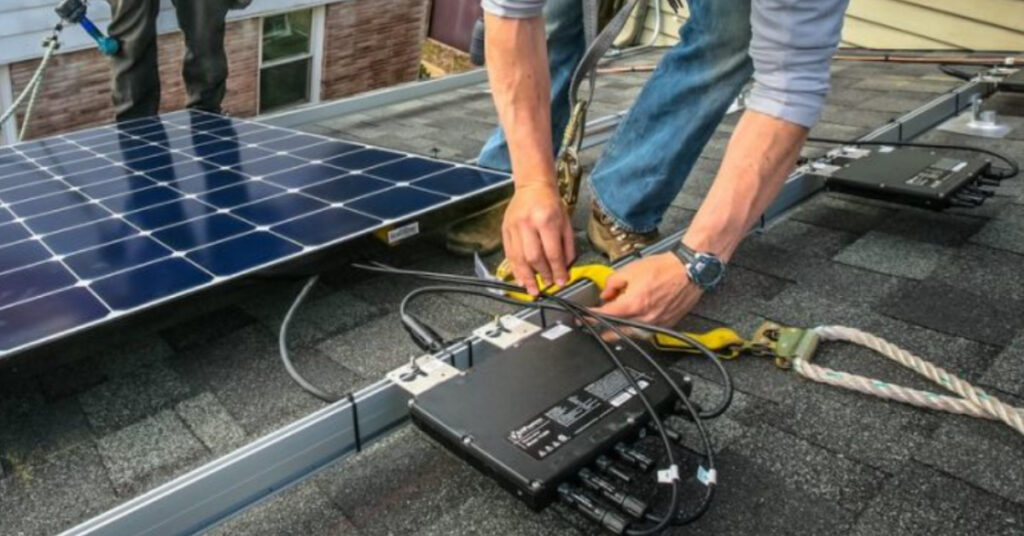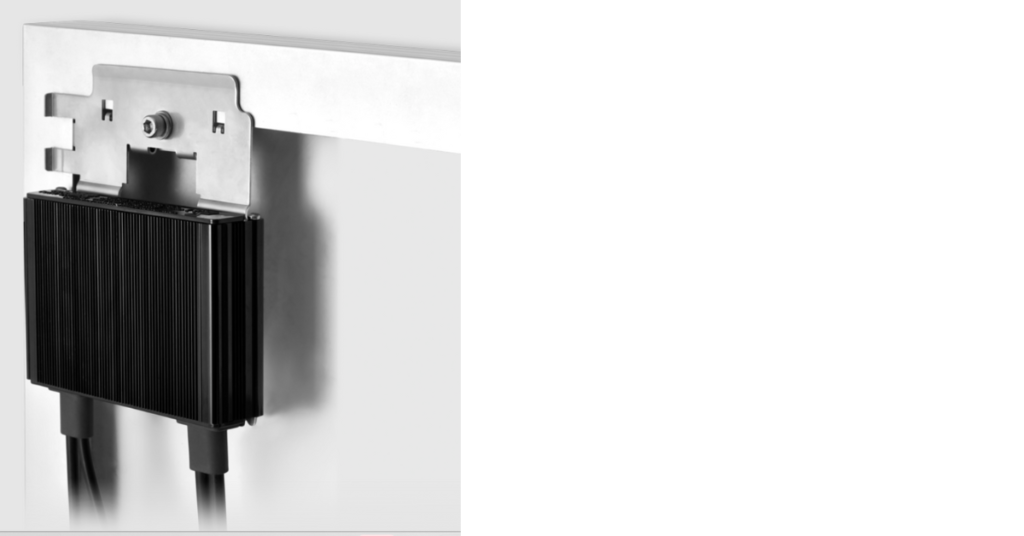Solar energy is getting more popular as the world advances toward a sustainable future. Technologies to optimize energy output and efficiency can be challenging to design a solar PV system when designing a solar PV system. Two common technologies are microinverters and power optimizers. In this article, we will go through the benefits and drawbacks of each technology.
Microinverters are small inverters mounted on each solar panel. They convert the DC power generated by each panel into AC power that can be used in the home or fed into the grid. Microinverters operate independently of one another, meaning that the performance of one panel does not affect the performance of others. This can be an advantage in situations where shading or other factors impact the performance of individual panels.
Some of the advantages of microinverters include the following:
- Greater flexibility in system design, as each panel has individual inverters. More customization regarding the placement of panels and the system’s overall design is allowed.
- Easier installation, as no additional wiring or communication is required. Installing microinverters in a “plug and play” fashion makes the installation process faster and simpler.
- Each panel’s independence can lead to improved efficiency in shaded conditions. In shaded conditions, the performance of one panel will not impact the performance of the others, resulting in higher overall system efficiency.
However, there are several downsides to consider
- Each panel needs its own inverter, which can make the cost of microinverters higher than other inverters.
- In unshaded conditions, microinverters may be less efficient than other inverters.

On the other hand, power optimizers are installed on each solar panel to maximize energy production. They work by conditioning the DC power generated by each solar panel before it reaches the central inverter. Power optimizers can improve energy output and efficiency by reducing the impact of shading, module mismatch, or other factors that can negatively affect panel performance.
Advantages of power optimizers:
- Each panel has power optimizers installed, eliminating the need for additional inverters and resulting in a lower overall cost.
- Potentially higher efficiency compared to microinverters in unshaded conditions.
- A centralized design may be more suitable for larger PV systems than microinverters.
However, there are several drawbacks to consider:
- Power optimizers can make it more challenging to modify the system, as each panel has its own optimizer.
- They require additional wiring and communication, making the installation more complex.
Despite the pros and cons of each technology, the overall benefits of going solar are clear. Using solar energy can reduce your reliance on fossil fuels and help combat climate change. Additionally, solar energy can be a cost-effective alternative to traditional energy sources, especially long-term.

Other benefits of going solar include:
- Increased home value: Solar panels can add value to your property by offering an environmentally friendly and sustainable energy source.
- Energy independence: By generating your energy, you are less reliant on the grid and less vulnerable to power outages or blackouts.
- Tax credits and incentives: Several federal and state tax benefits and incentives are available for individuals that install solar panels. These incentives can lower the initial cost of installing solar panels, making them more affordable for households.
When deciding between microinverters and power optimizers, it is critical to consider your installation’s specific needs and constraints. If shading or other factors negatively impact the performance of individual panels, microinverters are the better choice. However, power optimizers may be better if cost is a primary concern or a centralized design is more appropriate for your system.
Ultimately, the choice between microinverters and power optimizers comes down to the unique needs of your installation. Consulting with a professional solar installer can help you to make an informed decision and ensure that your solar PV system is optimized for maximum efficiency and energy output.
In conclusion, getting solar is a wise and environmentally friendly choice for households. To achieve long-term energy savings and contribute to the fight against climate change, you can lower your dependency on fossil fuels and produce your own energy. While choosing between microinverters and power optimizers may seem complicated, it is crucial to consider your installation’s particular needs and consult a trusted professional to make the best decision for your home and budget.
If you are considering going solar, working with a qualified installer who can help you navigate the many options available is essential. One platform that can help you find the correct installer for your needs is DroneQuote. Using advanced drone technology, we can provide accurate and detailed quotes for solar installations, making finding the right installer for your project easier. You can feel confident that you are getting the best possible value for your investment in solar energy. Let’s get you started by clicking here.
